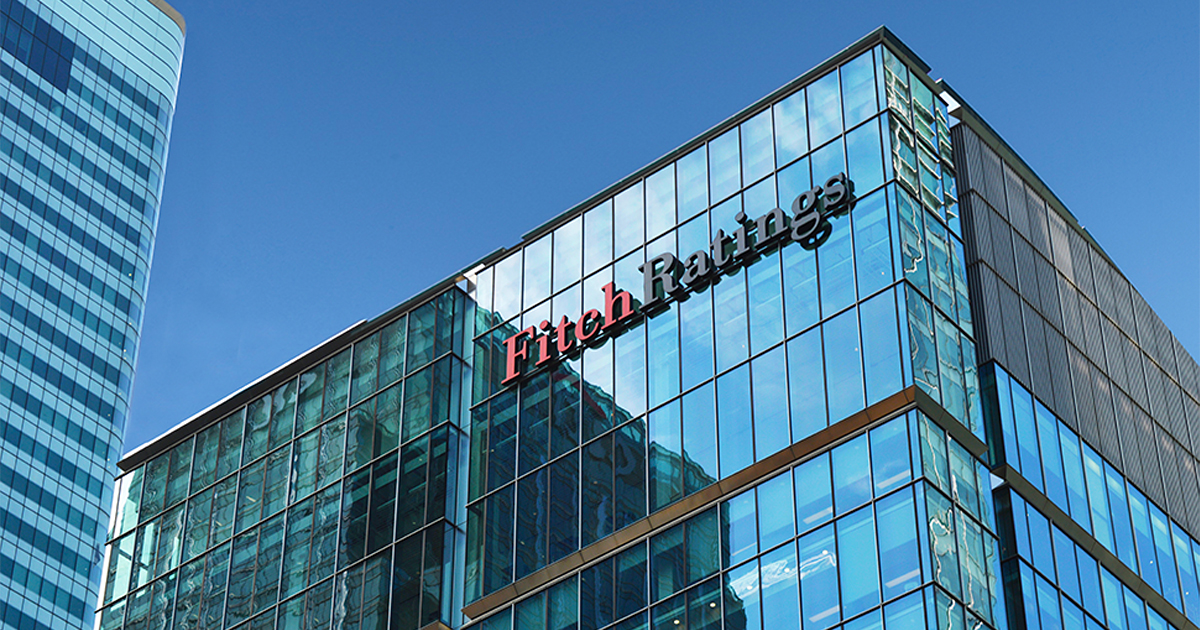
FitchRatings has revised the Outlook on Armenia’s Long-Term Foreign-Currency Issuer Default Rating (IDR) to Positive from Stable and affirmed the IDR at ‘B+’.
A full list of rating actions is at the end of this rating action commentary.
Key Rating Drivers
The revision of the Outlook reflects the following key rating drivers and their relative weights:
High
Large Immigration Drives Improvements: An influx of immigrants (estimated by the authorities at about 65,000) from Russia, Ukraine and Belarus, representing a 2.2% annual increase in the population, has boosted external as well as macroeconomic and fiscal performance. A very large influx of immigrants and capital from Russia in 2022 has boosted external as well as macroeconomic and fiscal performance. The exact scale of the immigration is hard to quantify, given the open migration regime for Russians in Armenia and the durability of this positive shock is still uncertain. However, it led to a 140% increase in remittances/money transfers and Fitch anticipates that a substantial proportion of new immigrants will stay in Armenia for at least two to three years and sees a substantial chance that some of the positive effects will endure.
Strengthening of External Finances: The external inflows led to a marked improvement in the external balance sheet for Armenia. Fitch estimates the current account to have registered a small surplus in 2022 (current ‘B’ median: -3.8%; ‘BB’ median: -4.1%), based on 1Q-3Q outturns, the first annual surplus on record, which contributed to an increase in FX reserves by USD880 million to USD4.1 billion in 2022. We expect a return to moderate deficits in 2023 and 2024.
In addition, net external debt fell by around 12pp to an estimated 44.5% of GDP in 2022 (current ‘B’ median: 26.6%; ‘BB’ median: 15.4%). Separately, in December 2022, the IMF approved a USD171 million three-year Stand-By Arrangement (SBA), which is being treated as precautionary by the Armenian authorities, and will provide a policy anchor and limited buffer in case of any negative external shocks, such as a reversal of the recent inflows.
Medium
Strong Growth: The Armenian economy is estimated to have grown by 11.6% in 2022, a 15-year high, boosted by the large influx of migrants, which also provides an upside to potential growth (currently estimated at 4.5%). Fitch estimates growth will slow to 6.1% in 2023 and 4.7% in 2024. Growth will be driven by personal consumption, relatively stable exports (notably to Russia as Armenia replaces import sources that have become disrupted by sanctions) and an expected increase in public investment.
Fiscal Outperformance and Debt Reduction: The fiscal deficit fell from 4.6% in 2021 to 2.2% of GDP in 2022, below the government’s target of 2.5% (current ‘B’ median: 2.7%; ‘BB’ median 3.3%) amid tax revenue growth of 18% and a decline in capex of 10%. Public debt fell by nearly 13pp to 47.6% in 2022, driven in large part by the exchange rate appreciation (about 18% vs the US dollar in 2022) and robust real GDP growth. Fitch expects debt to stabilise around 47.4% of GDP in the medium term. A sharp depreciation of the exchange rate is the primary risk to debt dynamics, given that 62.1% of public debt is FX-denominated as of 2022 (end-2021: 71.2%).
Armenia’s ratings also reflect the following rating drivers:
Policy Framework and Governance: Armenia boasts strong governance indicators relative to ‘B’ rating peers, as well as a robust macroeconomic and fiscal policy framework, and credible commitment to reform.
Overheating Risks: Inflation averaged 8.6% in 2022, well above the Central Bank of Armenia’s (CBA) target of 4% (with a tolerance band of +/-1.5pp), driven by high global food prices and surging domestic demand, triggered by the migrant arrivals. Core inflation averaged 8.9% in 2022 as demand for housing and other services increased sharply. Domestic wage growth rose to 20.7% yoy in 4Q22, adding to inflationary pressures. Armenia is less exposed to global energy price fluctuations given the long-term fixed nature of its gas purchase contract with Gazprom.
The strengthening of the currency in 2022, lower global oil prices and the lagged impact of the policy rate hikes by the CBA (cumulative hikes of 300bp to 10.75% in 2022) will reduce inflation to 6.5% on average in 2023 and 4.2% in 2024. However, the substantial pressures on domestic supply from the surge in the population could mean more persistent inflationary pressures and overheating.
Solid External Creditor Support: Armenia benefits from strong support and technical assistance from a range of multilateral and bilateral creditors. As of 2022, an estimated 44.5% of general government debt was owed to official lenders, including the World Bank, Asian Development Bank, OPEC Fund and the French Development Agency, offering favourable financing conditions.
Geopolitical Risks: Tensions with Azerbaijan escalated in 2H22, with renewed military hostilities in the disputed Nagorno-Karabakh region as well as Azerbaijani territorial incursions into Armenian border regions, which it continues to hold. Azeri protestors have blockaded Armenia’s access to Nagorno-Karabakh since December, and negotiations on a peace agreement have stalled. While a full-scale conflict is not our base case, the potential for renewed fighting remains, although any broader macroeconomic impact will probably be limited. Russia’s peacekeeping role in the region has complicated Armenia’s ties with it, given the former’s perceived lack of support for the Armenian position in the territorial dispute.
Armenia is exceptionally dependent on Russia for its energy supplies, and there are few credible signs of diversification. Russia is also Armenia’s largest export market and source of imports, as well as an important source of remittances. Armenia is cautiously navigating the tension between its close relations with Russia and its relations with the EU and the US with regards to sanctions on Russia.
Stable Banking Sector, Relatively High Dollarisation: Armenian banks reported a profitable 2022 (return on equity of 28%), with solid asset quality (non-performing loan ratio of 2.8%) and capitalisation (Tier 1 capital ratio of 19%). Deposit dollarisation rose by 1.8pp to 43.6% (57.2% when non-resident deposits are included), indicating the strong influx of remittances/money transfers. Loan dollarisation has fallen from 45.5% in 2021 to 36.6% by end-2022, reflecting dram appreciation. Banks have adequate dram and US dollar liquidity, and a destabilising outflow of deposits is not seen as likely.
ESG – Governance: Armenia has an ESG Relevance Score (RS) of ‘5’ and ‘5[+]’ respectively for Political Stability and Rights, and for the Rule of Law, Institutional and Regulatory Quality and Control of Corruption. Theses scores reflect the high weight that the World Bank Governance Indicators (WBGI) have in our proprietary Sovereign Rating Model. Armenia has a medium WBGI ranking at the 47th percentile, reflecting a recent track record of peaceful political transitions, a moderate level of rights for participation in the political process, moderate institutional capacity, established rule of law and a moderate level of corruption.








